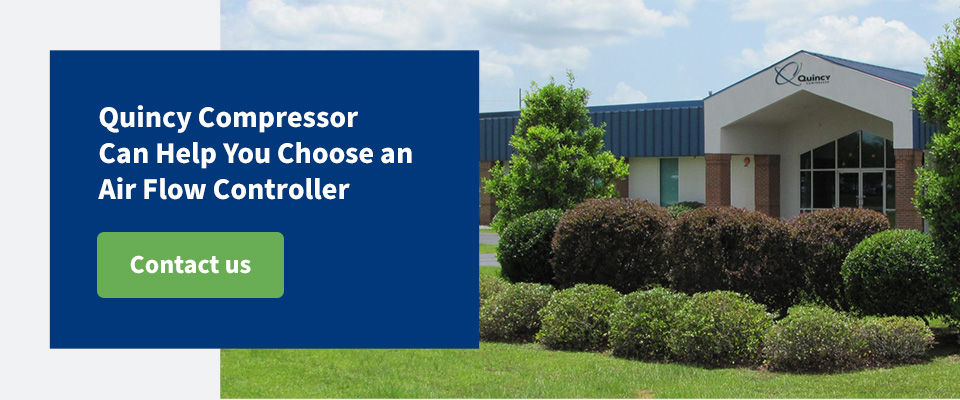In a pneumatic system, an air flow controller adjusts the volume of air that enters the system. Different types of air flow controllers are available depending on the application. Learn more about how to choose a suitable controller for your needs.
What Is an Air Flow Controller?
Air flow controllers allow you to change the volume of air within a pneumatic system. They are sometimes called valve controls or mass flow controllers.
The various types of air flow controllers include:
- Motorized flow control valves: Motorized flow control valves have two ceramic discs that rotate around each other. The valves allow for maximum air flow when the two segments align. Air flow is restricted when the segments are out of alignment.
- Proportional flow control valves: Proportional flow control valves have a spool with a microprocessor that precisely controls flow.
- Banjo flow controllers: Banjo flow controllers can be adjusted manually using a screwdriver slot or a knurled nut.
What Does an Air Flow Controller Do?
Although different types of air flow controllers exist, they operate under the same principle of controlling air flow by adjusting the size of the opening it moves through — the smaller the opening, the lower the air flow. When the aperture is fully closed, there’s no air flow at all, while a wider gap allows freer travel.
Air Flow Controllers vs. Air Regulators
The primary difference between an air flow controller and an air regulator is that a flow controller controls flow while an air regulator controls pressure. An air regulator is an example of a pressure control valve.
Air flow refers to the amount of air output over a period and is often measured in volume per time unit, such as liter per minute. Air pressure is the amount of force placed on an area. It’s measured in weight per area unit, such as pounds per square inch.
How to Choose an Air Flow Controller
Keep the following in mind when choosing an air flow controller:
- The connection required: Controllers can be push-in or threaded.
- The control method: Do you need a manual adjustment or remote?
- The environment: Will you operate the controller in a hot, humid or dry environment?
- The configuration: Do you need a unidirectional or bidirectional valve? If your application calls for a unidirectional unit, do you need to control the in-flow or exhaust cycles?
- The flow rate allowed: The maximum and minimum flow rates required will influence the unit’s port size.
Quincy Compressor Can Help You Choose an Air Flow Controller
Quincy Compressor specializes in the production of air compressors and related products. We’re happy to answer any questions you have about choosing the right air flow controller. Contact our team today to learn more.


